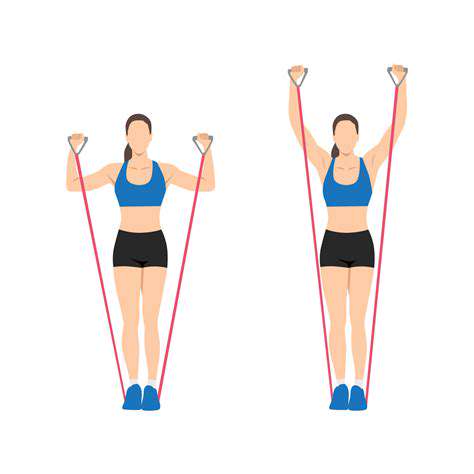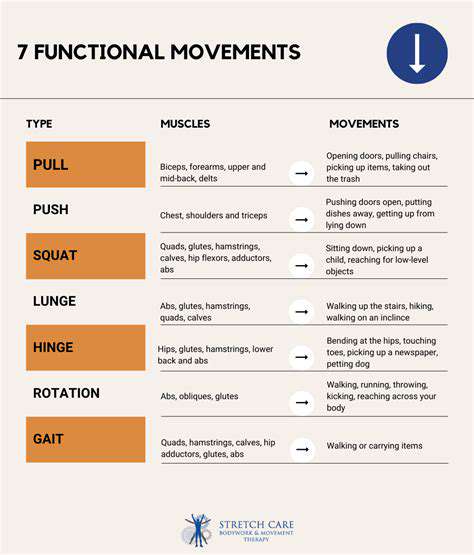Setting Achievable Walking Goals for Senior Fitness
Monitoring Your Progress and Maintaining Motivation
Establishing Your Starting Point
Before creating ambitious walking plans, it's important to know your current fitness level. How many minutes can you walk comfortably without excessive fatigue? What's your typical walking speed? Understanding your baseline helps establish realistic goals that challenge you without causing frustration, leading to better long-term results. This initial assessment provides the groundwork for your personalized walking plan.
Don't be discouraged if your starting point seems low. Everyone begins somewhere, and the focus should be on gradual improvement rather than immediate perfection.
Setting Weekly Objectives
Avoid trying to make dramatic changes all at once. Instead, establish small weekly goals. You might aim to add 5-10 minutes to your walking time each week, or incorporate an additional walking day into your routine. These incremental changes prove more sustainable and lead to better long-term motivation than attempting drastic overnight transformations.
Creating Quantifiable Targets
For effective progress tracking, your goals should be measurable. Rather than vaguely planning to walk more, set specific targets like walking 30 minutes three times weekly. This clarity makes it easier to monitor your achievements and identify areas needing adjustment. Concrete goals keep you engaged and focused on your objectives.
Adding Variety to Your Walks
Walking doesn't have to be monotonous. Change your routes, discover new paths, or experiment with different paces and intervals. Variety keeps your routine fresh and prevents boredom, which often derails exercise consistency. Mixing things up also engages different muscle groups and enhances overall fitness.
Using a Walking Log or Application
Keeping records of your walks in a journal or fitness app helps track progress and maintain motivation. Note your distance, time, pace, and how you felt during each walk. Seeing your achievements visually can be highly motivating and help identify patterns or areas for improvement. This documentation also allows for valuable reflection on your journey.
Celebrating Your Achievements
Recognize your accomplishments along the way! Celebrating milestones - whether reaching a certain distance or maintaining consistency - reinforces positive behavior and keeps you motivated. Rewards don't need to be elaborate; simple acknowledgments or small treats can provide sufficient encouragement to continue progressing. This positive reinforcement plays a crucial role in sustaining motivation.
Building a Support Network
Consider sharing your walking goals with friends, family, or a support group. Having someone to encourage you and hold you accountable can significantly boost your commitment to your walking routine. Supportive companions can offer motivation, encouragement, and even suggest new walking routes. Sharing your experience also fosters a sense of community, making the process more enjoyable and sustainable.
Evolving Your Walking Routine With Progress

Adjusting Your Walking Routine for Maximum Benefit
Walking offers numerous health advantages, from better heart health to improved mood. But simply walking isn't enough to maximize these benefits. To truly gain the most from walking, you need to adapt your routine to your changing needs and goals. This involves considering factors like speed, duration, walking surface, and frequency.
Regularity matters most when it comes to getting the full benefits of walking as exercise. Establishing a consistent schedule, even if it's just 15-20 minutes several times weekly, puts you on the path to better health. Remember that gradual increases in intensity and duration prove more sustainable and less likely to cause injuries than sudden jumps.
Try incorporating interval training for added challenge. Alternating between brisk walking and slower paces or rest periods can elevate your heart rate and increase calorie burn. Adding hills or inclines to your route provides additional intensity, strengthening leg muscles and enhancing calorie expenditure.
Experimenting With Different Walking Styles
Beyond adjusting pace and duration, trying various walking techniques can enhance your experience and results. Consider power walking - a faster pace with more vigorous arm movements that engages additional muscles. This approach burns more calories and builds strength.
Nordic walking, using poles, provides a comprehensive full-body workout. The poles help propel you forward while engaging arm and core muscles. This technique particularly benefits those with joint concerns, as it distributes impact more evenly.
Walking with companions or joining a walking group adds motivation and accountability. Having company makes exercise more enjoyable and helps maintain consistency. Group walks also offer social interaction and support, making the experience more engaging.
Exploring different environments like trails or parks adds variety and interest to your walks. This helps prevent boredom and encourages continued progress. Changing scenery also provides mental stimulation.
Don't hesitate to experiment with different walking approaches. Discover what works best for you and your body, remembering to listen to your body's signals and adjust accordingly.











